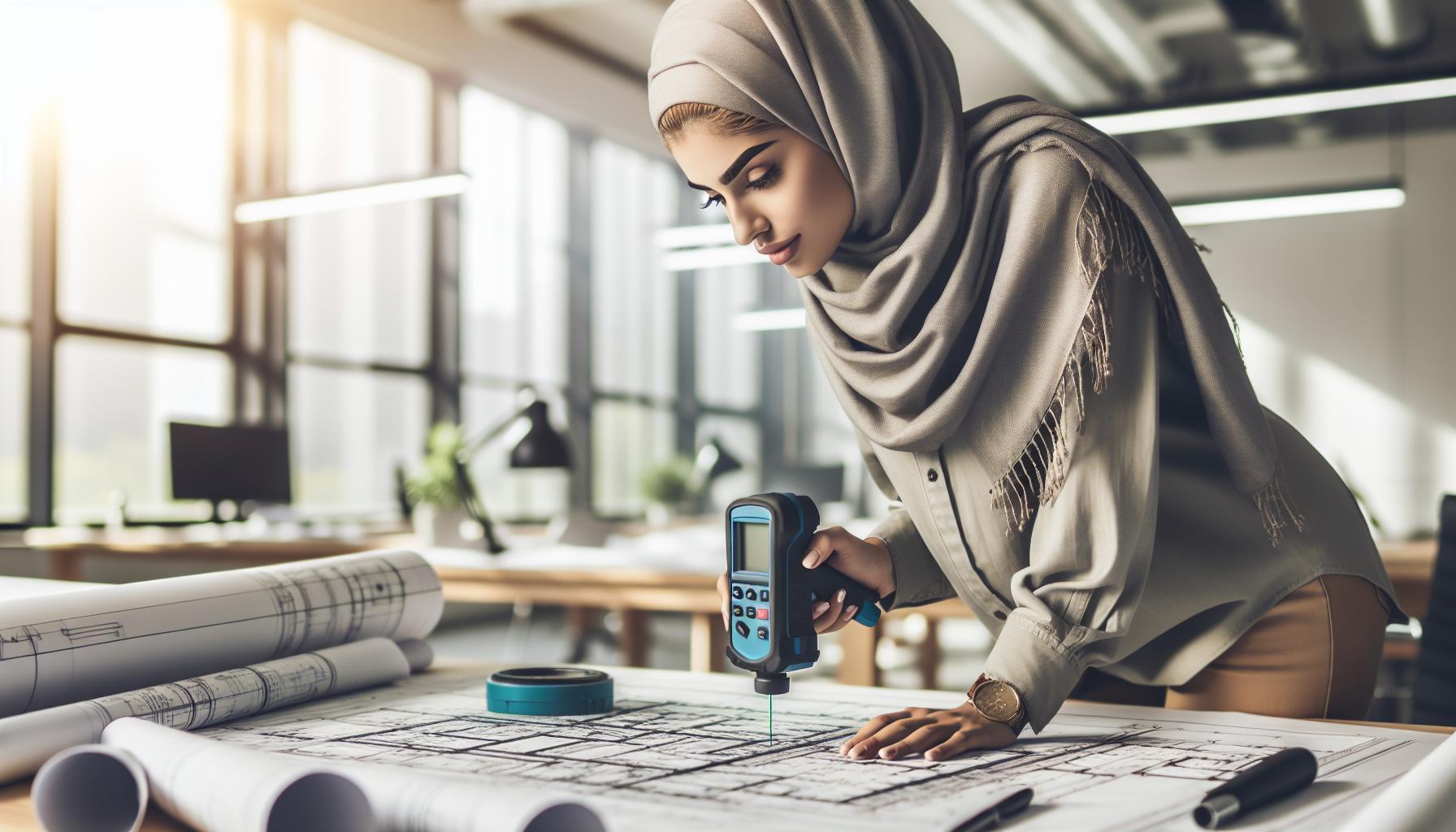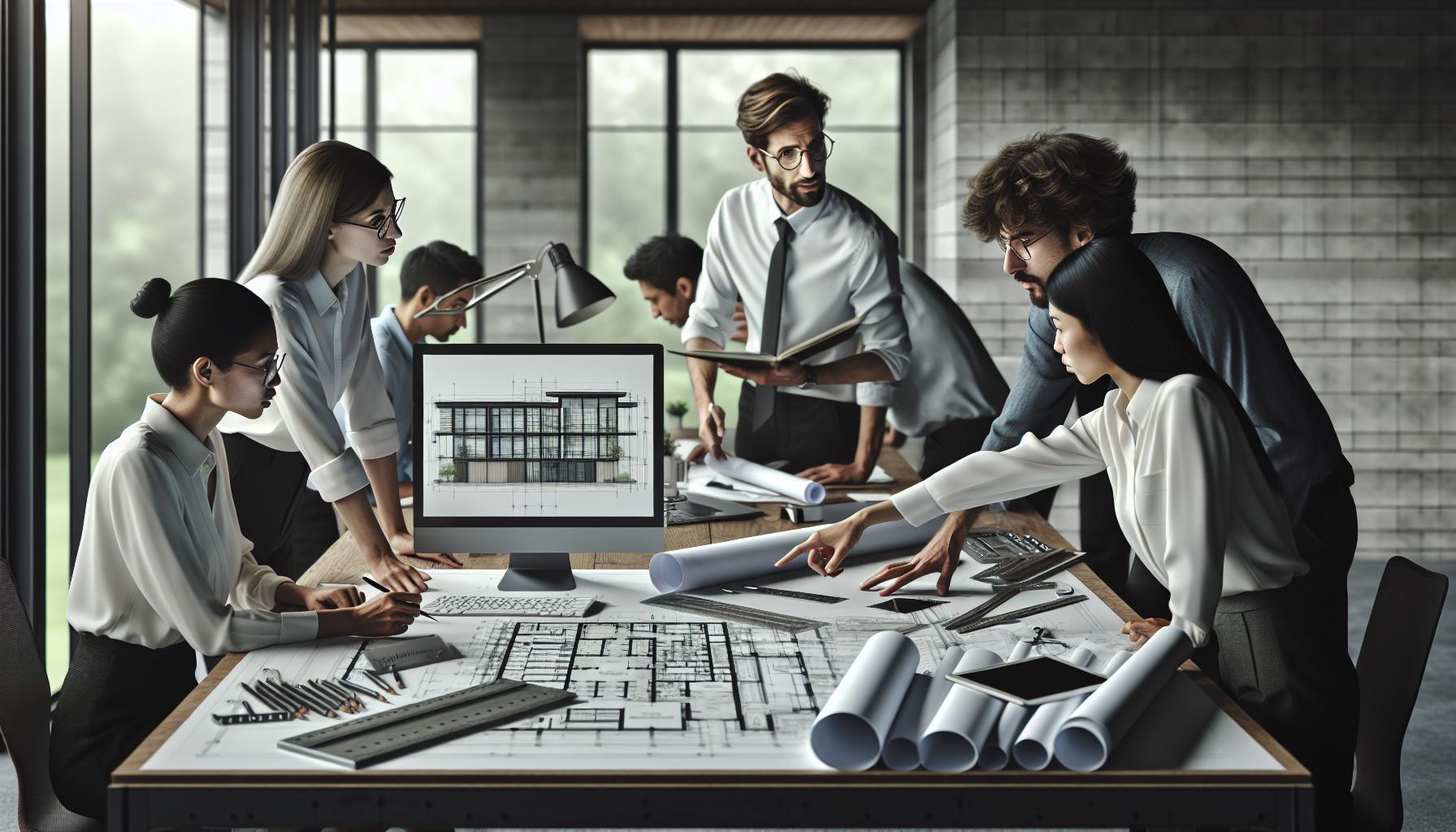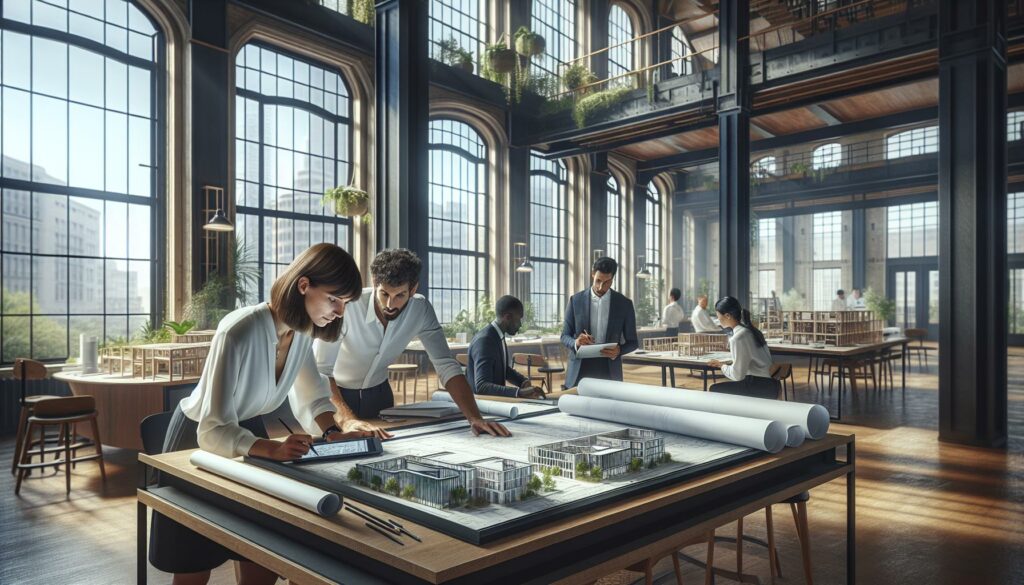In a world where creativity meets precision, architectural drafting and design reign supreme. It’s the magical realm where blueprints transform into breathtaking buildings, and every line drawn tells a story. Imagine a place where dreams take shape, and even the most whimsical ideas can become reality.
Architectural Drafting and Design
Architectural drafting and design incorporates technical drawing and modeling to create detailed representations of building concepts. Various software programs, including AutoCAD and Revit, facilitate the drafting process, enabling architects to visualize structures before construction begins. This stage involves precise measurements and specifications, ensuring that each design adheres to relevant building codes and regulations.
Blueprints serve as essential documents for communication between architects, engineers, and contractors. These drawings maintain a consistent level of detail, portraying everything from floor plans to elevations. Incorporating both aesthetic and functional elements is vital; this balance ultimately influences the user experience in the completed building.
Collaboration plays a crucial role in architectural projects. Architects often consult with clients to understand their vision, involving them in the design process to incorporate their preferences. Sustainability also remains a focal point in contemporary design, with architects employing environmentally friendly materials and practices.
In recent years, advancements in technology have transformed architectural drafting and design. Building Information Modeling (BIM) offers an integrated platform for design optimization, allowing for real-time updates and modifications. Virtual reality tools provide immersive experiences, permitting clients to explore designs before they materialize in the physical world.
Attention to detail and accuracy holds paramount importance. Even minor errors in measurements can lead to significant issues during construction. Comprehensive review processes and revisions help ensure that architectural documents achieve the highest standards before any groundbreaking begins.
Key Principles of Architectural Drafting

Architectural drafting relies on foundational principles that guide the creation of precise and functional designs. These principles ensure clarity in communication among stakeholders involved in a project.
Importance of Accurate Measurements
Accurate measurements form the backbone of architectural drafting. Precision ensures that every detail aligns with the overall vision, preventing costly errors during construction. Architects utilize various tools to gather measurements, including laser distance meters and digital calipers. These devices provide exact data, which contributes to the integrity of designs. Inaccurate measurements can result in structural issues, leading to delays and budget overruns. Therefore, meticulous attention to detail during the drafting phase mitigates risks and fosters project success.
Understanding Scales and Proportions
Understanding scales and proportions is essential in architectural drafting. Scales represent the relationship between the drawn dimensions and reality, enabling designers to create drawings that accurately depict intended sizes. By employing scales, architects can produce detailed blueprints that facilitate visualization. Proportions ensure that elements within a design relate harmoniously, maintaining balance and aesthetic appeal. Architects often utilize scale rulers and software tools to achieve desired proportions in their designs. Maintaining consistent scales throughout drawings avoids confusion and supports collaboration among architects, engineers, and contractors.
Tools and Technologies in Architectural Design

Architectural design relies on a blend of traditional and modern tools, enabling professionals to create precise and innovative structures. Each tool and technology serves a specific purpose in the drafting process.
Traditional Drafting Tools
Mechanical pencils play a vital role in sketching initial concepts. Exacto knives allow for precise cutting of paper, ensuring clean edges. T-squares help architects establish straight lines, while triangles facilitate accurate angles. Scale rulers provide a way to create models to specific measurements, ensuring accurate representation. Other handy tools include compasses for curves and templates for consistent shapes. Each tool contributes to the meticulous nature of architectural drafting.
Software Applications for Modern Design
Software applications revolutionize architectural design, making complex projects manageable. AutoCAD remains a staple for 2D and 3D drafting, offering versatility in various design scenarios. Revit enhances collaborative workflows, allowing for Building Information Modeling integration. SketchUp simplifies 3D modeling, making it accessible for users with varying skill levels. ArchiCAD supports intuitive design processes, streamlining project workflows. Additional applications like BIM 360 provide real-time project management capabilities. Each program enhances efficiency and communication among architects and stakeholders.
The Process of Architectural Design

Architectural design unfolds through a structured approach, combining creativity and technical precision. Essential stages like concept development and detailed drafting techniques ensure successful project outcomes.
Concept Development
Concept development represents the initial phase of architectural design, where ideas start taking shape. Architects brainstorm and explore different design possibilities while focusing on client needs. This stage involves sketching preliminary concepts, often aided by software tools for enhanced visualization. Collaboration with clients enriches this process, enabling direct feedback. Considerations such as site location, budget constraints, and sustainability factors weigh heavily in these discussions. Sketches evolve into more refined ideas, forming the foundation for subsequent drafting.
Detailed Drafting Techniques
Detailed drafting techniques translate initial concepts into comprehensive plans. Precision dictates the accuracy of measurements, a crucial aspect in this phase. Architects utilize software like AutoCAD or Revit for creating intricate drawings that include dimensions, materials, and technical specifications. Employing various drafting styles, such as orthographic projections and isometric drawings, ensures clarity for all stakeholders involved. Attention to detail becomes paramount; minor errors can lead to significant issues during construction. Incorporating detailed annotations and legend elements enhances understanding and communication among team members.
Common Challenges in Architectural Drafting
Architects face various challenges during the architectural drafting process. Accurate measurements pose significant obstacles. If measurements are off, the entire project can suffer, leading to costly revisions and delays.
Coordination among team members often creates hurdles. When architects, engineers, and contractors work on different aspects simultaneously, miscommunication can occur. Clear communication channels are essential to avoid misunderstandings and ensure everyone is on the same page.
Time constraints frequently challenge architects. Tight deadlines can lead to rushed work, increasing the likelihood of errors. Allocating sufficient time for each stage of the drafting process remains critical to maintaining high quality.
Adhering to building codes presents additional difficulties. Regulations may change, and ensuring compliance requires thorough knowledge and attention to detail. Staying updated on local building codes helps minimize risks associated with non-compliance.
Sustainability is another complex factor. Architects actively incorporate eco-friendly materials and energy-efficient designs, but balancing aesthetics and functionality remains challenging. Integrating innovative sustainable practices often involves extensive research and continuous learning.
Technological advancements also introduce challenges. Keeping up with the latest software tools like Revit and AutoCAD demands ongoing training. Ensuring proficiency in these technologies enhances productivity but can strain resources.
Finally, client collaboration can complicate the drafting process. Clients often have evolving preferences and ideas, which can lead to scope creep. Regular feedback sessions and clear expectations define successful collaboration, ensuring the project aligns with the client’s vision.
Future Trends in Architectural Drafting and Design
Sustainability continues to dominate architectural drafting and design trends. Increasingly, architects incorporate eco-friendly materials and energy-efficient systems into their plans. Innovations in renewable energy technologies frequently reshape design choices, promoting green building practices.
Digital tools gain prominence in architectural workflows. Software like Building Information Modeling (BIM) enhances collaboration by streamlining communication among architects, engineers, and contractors. Virtual reality applications immerse clients in designs, allowing them to experience spaces before completion.
Smart buildings emerge as a key focus in architectural design. Integration of advanced technologies, such as IoT devices, optimizes energy management and improves user comfort. As a result, architects prioritize designs that accommodate these intelligent systems.
Parametric design tools reshape the creative process. They enable architects to explore complex forms and optimize space utilization, which leads to innovative solutions. This adaptive design approach allows for customization based on specific project requirements.
Collaboration between disciplines is crucial going forward. Architects increasingly engage with engineers and environmental specialists during the design phase. This teamwork fosters comprehensive, well-rounded solutions that address both aesthetic and functional aspects.
New regulations about building codes influence drafting methodologies. Adapting to evolving codes becomes essential for compliance and safety. Architects must stay informed about changes to ensure designs remain viable and aligned with standards.
Emphasis on user-centered design gains traction. Architects focus on creating spaces tailored to users’ needs, enhancing experience and usability. This trend acknowledges the importance of feedback and iterative design processes in achieving successful outcomes.
Future of Architecture Design
Architectural drafting and design represent a dynamic blend of creativity and technical precision. As architects navigate the complexities of modern construction, their ability to balance aesthetics with functionality remains crucial. The integration of advanced technologies and sustainable practices not only enhances the design process but also ensures that structures meet the evolving needs of society.
Collaboration among stakeholders fosters innovation and aligns visions, while attention to detail safeguards against costly errors. With the continuous advancement of tools and methodologies, the future of architectural drafting promises even greater possibilities. By embracing these changes, architects can create spaces that inspire and endure for generations to come.



